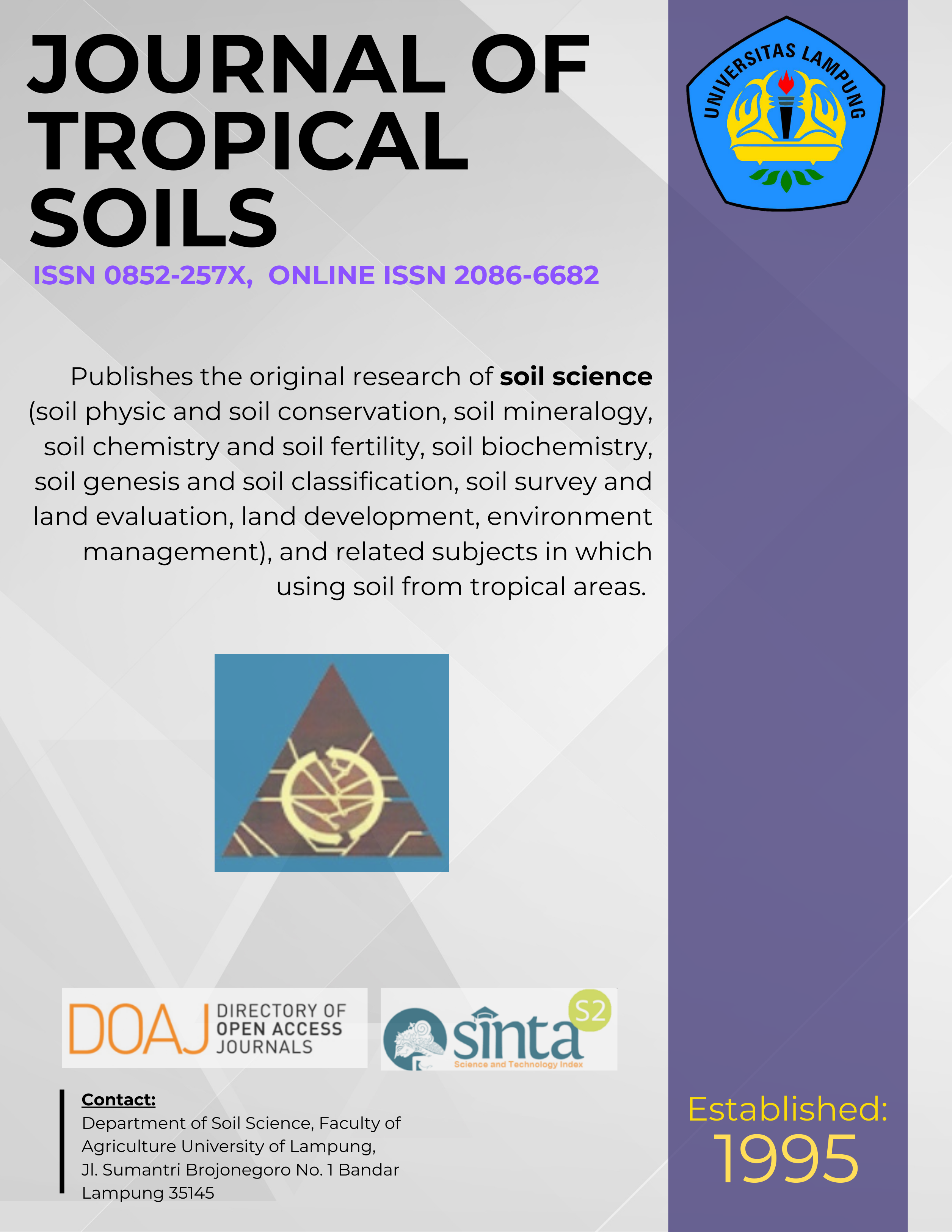Zeolite and Hucalcia as Coating Material for Improving Quality of NPK Fertilizer in Costal Sandy Soil
Main Article Content
Abstract
The growth and yield of plants are mainly a function of the quantity of fertilizer and water. In coastal sandy soil, nutrient losses and dry soils are seriously problems. The objective of the research was to study effect of zeolite and hucalci concentrations as NPK coating materials on NPK qualities i.e. water adsorption and release of N, P and K. The research used a coastal sandy soil as media. It was conducted in a laboratory of Soil Science Department, Gadjah Mada University from July to August 2009. Experimental design used was a factorial in a completely randomized design. The first factor was hucalci concentration, consisted of 10% (H1), 20% (H2), and 30% (H3). The second factor was zeolite concentration, consisted of 25% (Z1), 50% (Z2), 75% (Z3), and 100% (Z4). NPK fertilizer (without coating) used as a control. The results showed that hucalci and zeolite had a capability to increase water adsorption and to retard the release of N, P, K. The coated NPK with hucalci 30% and zeolite 100% had the highest quality in water absorption, water retention and release of nutrients.
Keywords: Coastal sandy soil, humic-calcium, NPK fertilizer, zeolite
Downloads
Article Details
Issue
Section
License for Authors
Authors who publish with this journal agree to the following terms:
- Authors retain copyright and grant the journal right of first publication with the work simultaneously licensed under a Creative Commons Attribution License that allows others to share the work with an acknowledgement of the work's authorship and initial publication in this journal.
- Authors are able to enter into separate, additional contractual arrangements for the non-exclusive distribution of the journal's published version of the work (e.g., post it to an institutional repository or publish it in a book), with an acknowledgement of its initial publication in this journal.
- Authors are permitted and encouraged to post their work online (e.g., in institutional repositories or on their website) prior to and during the submission process, as it can lead to productive exchanges, as well as earlier and greater citation of published work (See The Effect of Open Access).
License for Regular Users
Other regular users who want to cite, distribute, remix, tweak, and build upon author’s works, even for commercial purposes, should acknowledge the work’s authorship and initial publication in this journal, licensed under a Creative Commons Attribution License.

